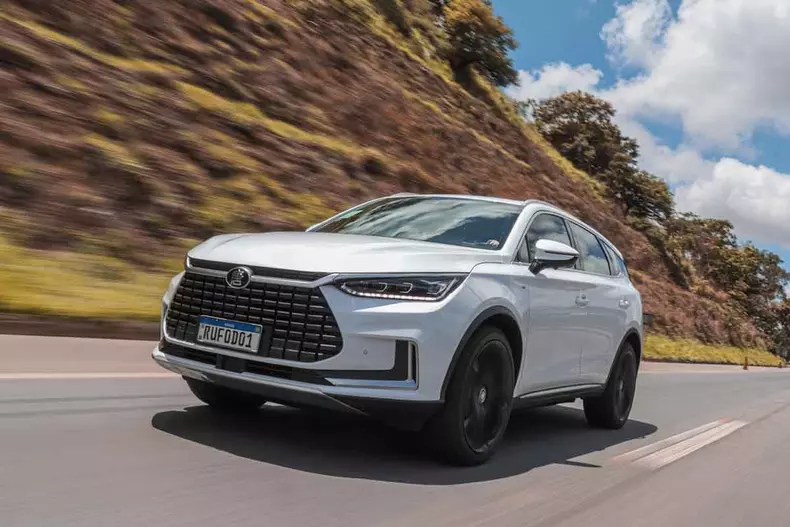In 2023, the electric vehicle (EV) market experienced a transformative surge. For the first time, the global sales of electric cars reached a staggering 6.8 million units, according to Bloomberg Green. As we venture into 2024, the rise of affordable EVs is set to redefine the automotive landscape, making sustainable transport accessible to a broader audience. This article explores the exciting developments in the 2024 EV models, shedding light on how they are changing the game for consumers and the environment alike.
The Shift Towards Affordable Electric Vehicles
Why 2024 is a Pivotal Year for EVs
The year 2024 marks a turning point as major automakers unveil an impressive lineup of affordable electric vehicles tailored for the average consumer. With advancements in battery technology and government incentives, the cost of producing EVs has significantly decreased. According to a report by Reuters Mobility, the average price of lithium-ion batteries fell by 13% in 2023, bringing us closer to price parity with traditional internal combustion engine vehicles.
New Models Making Waves
Several new models stand out in 2024 for their affordability and performance:
- Tesla Model 2: Expected to be priced around $25,000, Tesla’s new model aims to make luxury EVs accessible to the masses.
- BYD Seagull: With a starting price of $15,000, BYD’s latest offering is already making headlines for its efficiency and compact design.
- Volkswagen ID.2: Aimed at urban drivers, this model combines European engineering with a competitive price tag of approximately $20,000.
These vehicles are not just affordable; they are packed with features that appeal to tech-savvy consumers, such as advanced infotainment systems and semi-autonomous driving capabilities.
Key Factors Driving the Affordability
Battery Technology Advancements
The secret sauce behind the affordability of 2024 EVs lies in battery technology. According to MIT Technology Review, solid-state batteries and improved energy densities are reducing costs while increasing range. For instance, the latest batteries can deliver up to 400 miles per charge, a 20% improvement from previous models.
Government Incentives and Policies
Governments worldwide are playing a crucial role in promoting affordable EVs. In the United States, the Inflation Reduction Act offers tax credits of up to $7,500 for EV purchases, while European countries are providing subsidies to encourage EV adoption. These incentives make it easier for consumers to switch from gasoline-powered vehicles to cleaner alternatives.
Mass Production and Economies of Scale
Automakers are ramping up production to meet the growing demand for EVs. With manufacturing plants operating at full capacity, companies like Hyundai and Ford are achieving economies of scale, further driving down costs. Reuters Mobility reports that Ford’s new EV plant in Tennessee is set to produce 500,000 units annually by 2025, a testament to the industry’s rapid expansion.
Practical Tips for Prospective EV Buyers
How to Choose the Right Affordable EV
When selecting an EV, consider the following factors:
- Range: Ensure the vehicle meets your daily commute needs. Most 2024 models offer a range of 250 to 400 miles.
- Charging Infrastructure: Check the availability of charging stations in your area. Companies like Electrify America and ChargePoint are expanding their networks rapidly.
- Total Cost of Ownership: Factor in the savings from reduced fuel and maintenance costs, which can significantly offset the purchase price.
Charging Your EV Efficiently
Charging an EV is becoming more convenient than ever:
- Home Charging: Installing a Level 2 charger at home can fully charge most EVs overnight.
- Public Charging Stations: Use apps like PlugShare to locate nearby stations. Fast chargers can replenish an EV’s battery to 80% in about 30 minutes.
- Workplace Charging: Many employers now offer charging stations, making it easy to top up your vehicle during the workday.
Where to Buy the Best Affordable EVs
Purchasing an EV can be done through various channels:
- Dealerships: Traditional dealerships offer test drives and financing options.
- Online Platforms: Websites like Carvana and Vroom provide a seamless digital purchase experience.
- Manufacturer Websites: Brands like Tesla allow for direct online purchases, often including customizable options.
The Future of Affordable EVs
A Shift in Consumer Attitudes
The rise of affordable EVs is reshaping consumer attitudes towards electric transport. As these vehicles become more mainstream, buyers are appreciating the long-term benefits, such as lower running costs and reduced environmental impact. A study by CleanTechnica revealed that 70% of new car buyers in 2024 are considering an EV as their next purchase, up from 40% in 2022.
The Role of Infrastructure Development
The expansion of charging infrastructure is critical to supporting the growth of affordable EVs. Governments and private companies are investing heavily in charging networks, ensuring that range anxiety becomes a thing of the past. In Europe, the number of public charging points is set to triple by 2025, reports PV Magazine.
What Lies Ahead
As technology continues to evolve, the affordability and efficiency of EVs will only improve. Innovations in battery recycling and renewable energy integration will further enhance the sustainability of electric transportation. By 2030, industry experts predict that EVs could account for 50% of all new car sales worldwide.
Conclusion
The rise of affordable EVs in 2024 signifies a monumental shift in the automotive industry. With cutting-edge technology, government support, and increased consumer awareness, these vehicles are poised to become the norm rather than the exception. As the journey towards a sustainable future accelerates, now is the perfect time to consider making the switch to an electric vehicle. What are you waiting for? Join the electric revolution today and be part of the change that drives us towards a greener tomorrow.

